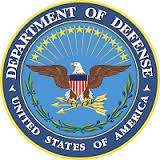The United States doesn’t want to engage in warfare in space, but like in all domains, the U.S. military must be prepared for such a conflict, and that’ll take a lot of preparation and change, Chief of Space Operations Gen. John W. Raymond, said.
He said the U.S. does not want to get into a conflict that begins or extends into space.
“We want to deter that from happening. However, if deterrence fails, a war that begins or extends into space will be fought over great distances at tremendous speeds,” Raymond said.
The chief of the newly-created Space Force spoke during a presentation that was part of the 2020 Air Force Association Air, Space and Cyber Conference, held this year virtually as a result of the COVID-19 pandemic.
To plan for warfare at the speeds and distances required to operate in space, the Space Force must be lean, agile and fast. The new military service has been working on all of those things since it stood up in December, Raymond said.
A big part of the leaning effort, he said, is the reduction of bureaucracy.
“Since establishment, we’ve been in the business of slashing bureaucracy, delegating authority and enhancing accountability at every crossroad,” Raymond said. “My opinion: big organizations are slow. We must move at speed to outpace the threats that we face.”
The general said the Space Force, in an effort to reduce bureaucracy, implemented a large-scale reorganization that involved removing two echelons of command, including a numbered Air Force and an O-6-level command.
“We’ve also reduced the size of our planned staff at the Pentagon,” Raymond said. “Back when we started, the Pentagon staff was going to be over 1,000 people. That was the initial plan. We’ve slashed that by 40%. We’re shortening the distance between decision makers and you, the experts, conducting our mission.”
Also part of eliminating bureaucracy, Raymond said, is a hard look at the agencies that exist now that are involved in acquisition for the space enterprise. He said Congress has identified some 65 different organizations involved in space-related acquisition.
The Space Force chief said there is a mandate for change, adding that we must bring unity of effort across the department, reduce duplication of effort, all while slashing costs, and increasing our speed.
“If we get this right, we will be the envy of the other services, because we are not tied to business of the past,” Raymond said.
The Space Force is also proposing a new acquisition system for space, something Raymond said Congress agrees with.
“We’ve already begun implementing that,” he said. “We’ve already delegated the head of contracting authority down from the Pentagon staff to the acquisition experts in the field. We know from experience this kind of delegation speeds up acquisition decisions, and makes us better partners for the industry.”
Partnership is also key, both inside the Defense Department and outside. Partnerships with the intelligence community, sister services, the total force and space allies are all being looked at for development, Raymond said.
As part of partnership development, he said the Space Force established a chief partnership office at the Space and Missile System Center, and that team is working to expand space partnerships with nations such as Australia, Canada, Japan, New Zealand, the United Kingdom, France and Germany.
Right now, he said, Space Force is working with Norway, for instance, to host American payloads on Norwegian space launches. That combined effort, he said, will save the U.S. about $900 million and also put those capabilities into space sooner. The U.S. is also working with the Japanese to put U.S. capabilities into Japanese satellites.
“These efforts improve our capabilities, and they strengthen our partnerships between our great nations,” he said.
Raymond also drew attention to verbiage on a display at the World War II memorial in Washington, D.C. On the floors of both the north and south pavilions are etched the words “Victory on Land, Victory at Sea, Victory in the Air.” Now, he said, those three domains are no longer enough to ensure victory. Today’s security environment, he said, requires even more of American warfighters.
“I am not confident that we can achieve victory or even compete in a modern conflict, without space power,” he said. “I am not willing to lose in order to learn. Today the Space Force in answering that call to compete, forging a warfighting service that is always above.”






